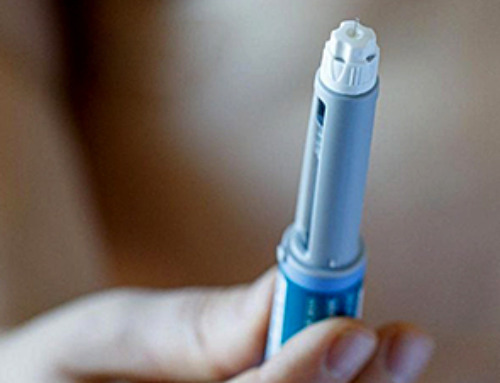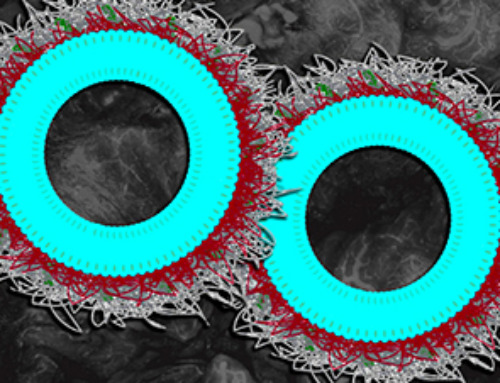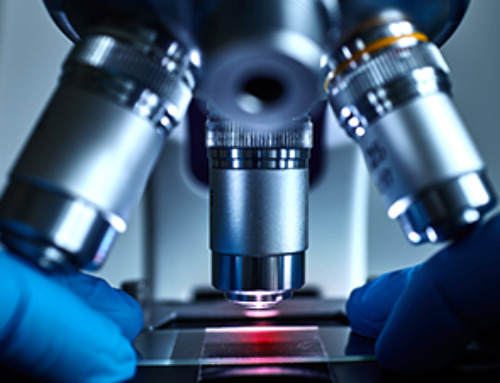There are many creatures on our planet with more advanced senses than humans. Turtles can sense Earth’s magnetic field. Mantis shrimp can detect polarized light. Elephants can hear much lower frequencies than humans can. Butterflies can perceive a broader range of colors, including ultraviolet (UV) light.
This new research, led by University of Illinois Urbana-Champaign electrical and computer engineering professor Viktor Gruev and bioengineering professor Shuming Nie, was recently published in the journal Science Advances.
Small Variations
“We’ve taken inspiration from the visual system of butterflies, who are able to perceive multiple regions in the UV spectrum, and designed a camera that replicates that functionality,” Gruev says. “We did this by using novel perovskite nanocrystals, combined with silicon imaging technology, and this new camera technology can detect multiple UV regions.”
UV light is electromagnetic radiation with wavelengths shorter than that of visible light (but longer than X-rays). We are most familiar with UV radiation from the sun and the dangers it poses to human health. UV light is categorized into three different regions—UVA, UVB and UVC— based on different wavelength ranges. Because humans cannot see UV light, it is challenging to capture UV information, especially discerning the small differences between each region.
Butterflies, however, can see these small variations in the UV spectrum, like humans can see shades of blue and green. Gruev notes, “It is intriguing to me how they are able to see those small variations. UV light is incredibly difficult to capture, it just gets absorbed by everything, and butterflies have managed to do it extremely well.”
The Imitation Game
Humans have trichromatic vision with three photoreceptors, where every color perceived can be made from a combination of red, green and blue. Butterflies, however, have compound eyes, with six (or more) photoreceptor classes with distinct spectral sensitivities. In particular, the Papilio xuthus, a yellow, Asian swallowtail butterfly, has not only blue, green and red, but also violet, ultraviolet and broadband receptors. Further, butterflies have fluorescent pigments that allow them to convert UV light into visible light which can then be easily sensed by their photoreceptors. This allows them to perceive a broader range of colors and details in their environment.
Beyond the increased number of photoreceptors, butterflies also exhibit a unique tiered structure in their photoreceptors. To replicate the UV sensing mechanism of the Papilio xuthus butterfly, the UIUC team has emulated the process by combining a thin layer of PNCs with a tiered array of silicon photodiodes.
PNCs are a class of semiconductor nanocrystals that display unique properties similar to that of quantum dots—changing the size and composition of the particle changes the absorption and emission properties of the material. In the last few years, PNCs have emerged as an interesting material for different sensing applications, such as solar cells and LEDs. PNCs are extremely good at detecting UV (and even lower) wavelengths that traditional silicon detectors are not. In the new imaging sensor, the PNC layer is able to absorb UV photons and re-emit light in the visible (green) spectrum which is then detected by the tiered silicon photodiodes. Processing of these signals allows for mapping and identification of UV signatures.
Health care and beyond
There are various biomedical markers present in cancerous tissues at higher concentrations than in healthy tissues—amino acids (building blocks of proteins), proteins, and enzymes. When excited with UV light, these markers light up and fluoresce in the UV and part of the visible spectrum, in a process called autofluorescence. “Imaging in the UV region has been limited and I would say that has been the biggest roadblock for making scientific progress,” explains Nie. “Now we have come up with this technology where we can image UV light with high sensitivity and can also distinguish small wavelength differences.”
Because cancer and healthy cells have different concentrations of markers and therefore different spectral signatures, the two classes of cells can be differentiated based on their fluorescence in the UV spectrum. The team evaluated their imaging device on its ability to discriminate cancer-related markers and found that is capable of differentiating between cancer and healthy cells with 99% confidence.
Gruev, Nie and their collaborative research team envision being able to use this sensor during surgery. One of the biggest challenges is knowing how much tissue to remove to ensure clear margins and such a sensor can help facilitate the decision-making process when a surgeon is removing a cancerous tumor.
“This new imaging technology is enabling us to differentiate cancerous versus healthy cells and is opening up new and exciting applications beyond just health,” Nie says. There are many other species besides butterflies capable of seeing in the UV, and having a way to detect that light will provide interesting opportunities for biologists to learn more about these species, such as their hunting and mating habits. Bringing the sensor underwater can help bring a greater understanding of that environment as well. While a lot of UV is absorbed by water, there is still enough that makes it through to have an impact and there are many animals underwater that also see and use UV light.
More information: Cheng Chen et al, Bioinspired, vertically stacked, and perovskite nanocrystal–enhanced CMOS imaging sensors for resolving UV spectral signatures, Science Advances (2023). DOI: 10.1126/sciadv.adk3860. www.science.org/doi/10.1126/sciadv.adk3860
Journal information: Science Advances
News
GLP-1 Drugs Like Ozempic Work, but New Research Reveals a Major Catch
Three new Cochrane reviews find evidence that GLP-1 drugs lead to clinically meaningful weight loss, though industry-funded studies raise concerns. Three new reviews from Cochrane have found that GLP-1 medications can lead to significant [...]
How a Palm-Sized Laser Could Change Medicine and Manufacturing
Researchers have developed an innovative and versatile system designed for a new generation of short-pulse lasers. Lasers that produce extremely short bursts of light are known for their remarkable precision, making them indispensable tools [...]
New nanoparticles stimulate the immune system to attack ovarian tumors
Cancer immunotherapy, which uses drugs that stimulate the body’s immune cells to attack tumors, is a promising approach to treating many types of cancer. However, it doesn’t work well for some tumors, including ovarian [...]
New Drug Kills Cancer 20,000x More Effectively With No Detectable Side Effects
By restructuring a common chemotherapy drug, scientists increased its potency by 20,000 times. In a significant step forward for cancer therapy, researchers at Northwestern University have redesigned the molecular structure of a well-known chemotherapy drug, greatly [...]
Lipid nanoparticles discovered that can deliver mRNA directly into heart muscle cells
Cardiovascular disease continues to be the leading cause of death worldwide. But advances in heart-failure therapeutics have stalled, largely due to the difficulty of delivering treatments at the cellular level. Now, a UC Berkeley-led [...]
The basic mechanisms of visual attention emerged over 500 million years ago, study suggests
The brain does not need its sophisticated cortex to interpret the visual world. A new study published in PLOS Biology demonstrates that a much older structure, the superior colliculus, contains the necessary circuitry to perform the [...]
AI Is Overheating. This New Technology Could Be the Fix
Engineers have developed a passive evaporative cooling membrane that dramatically improves heat removal for electronics and data centers Engineers at the University of California San Diego have created an innovative cooling system designed to greatly enhance [...]
New nanomedicine wipes out leukemia in animal study
In a promising advance for cancer treatment, Northwestern University scientists have re-engineered the molecular structure of a common chemotherapy drug, making it dramatically more soluble and effective and less toxic. In the new study, [...]
Mystery Solved: Scientists Find Cause for Unexplained, Deadly Diseases
A study reveals that a protein called RPA is essential for maintaining chromosome stability by stimulating telomerase. New findings from the University of Wisconsin-Madison suggest that problems with a key protein that helps preserve chromosome stability [...]
Nanotech Blocks Infection and Speed Up Chronic Wound Recovery
A new nanotech-based formulation using quercetin and omega-3 fatty acids shows promise in halting bacterial biofilms and boosting skin cell repair. Scientists have developed a nanotechnology-based treatment to fight bacterial biofilms in wound infections. The [...]
Researchers propose five key questions for effective adoption of AI in clinical practice
While Artificial Intelligence (AI) can be a powerful tool that physicians can use to help diagnose their patients and has great potential to improve accuracy, efficiency and patient safety, it has its drawbacks. It [...]
Advancements and clinical translation of intelligent nanodrugs for breast cancer treatment
A comprehensive review in "Biofunct. Mater." meticulously details the most recent advancements and clinical translation of intelligent nanodrugs for breast cancer treatment. This paper presents an exhaustive overview of subtype-specific nanostrategies, the clinical benefits [...]
It’s Not “All in Your Head”: Scientists Develop Revolutionary Blood Test for Chronic Fatigue Syndrome
A 96% accurate blood test for ME/CFS could transform diagnosis and pave the way for future long COVID detection. Researchers from the University of East Anglia and Oxford Biodynamics have created a highly accurate [...]
How Far Can the Body Go? Scientists Find the Ultimate Limit of Human Endurance
Even the most elite endurance athletes can’t outrun biology. A new study finds that humans hit a metabolic ceiling at about 2.5 times their resting energy burn. When ultra-runners take on races that last [...]
World’s Rivers “Overdosing” on Human Antibiotics, Study Finds
Researchers estimate that approximately 8,500 tons of antibiotics enter river systems each year after passing through the human body and wastewater treatment processes. Rivers spanning millions of kilometers across the globe are contaminated with [...]
Yale Scientists Solve a Century-Old Brain Wave Mystery
Yale scientists traced gamma brain waves to thalamus-cortex interactions. The discovery could reveal how brain rhythms shape perception and disease. For more than a century, scientists have observed rhythmic waves of synchronized neuronal activity [...]





















